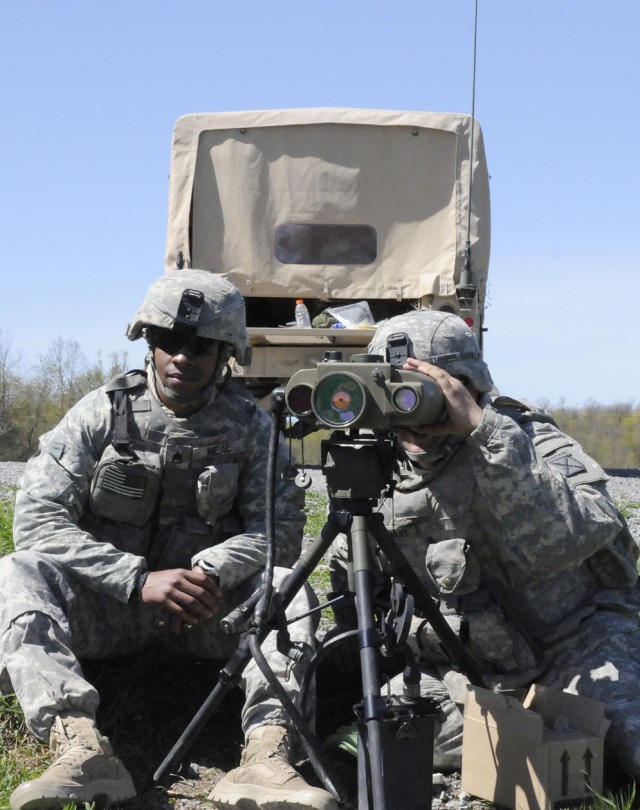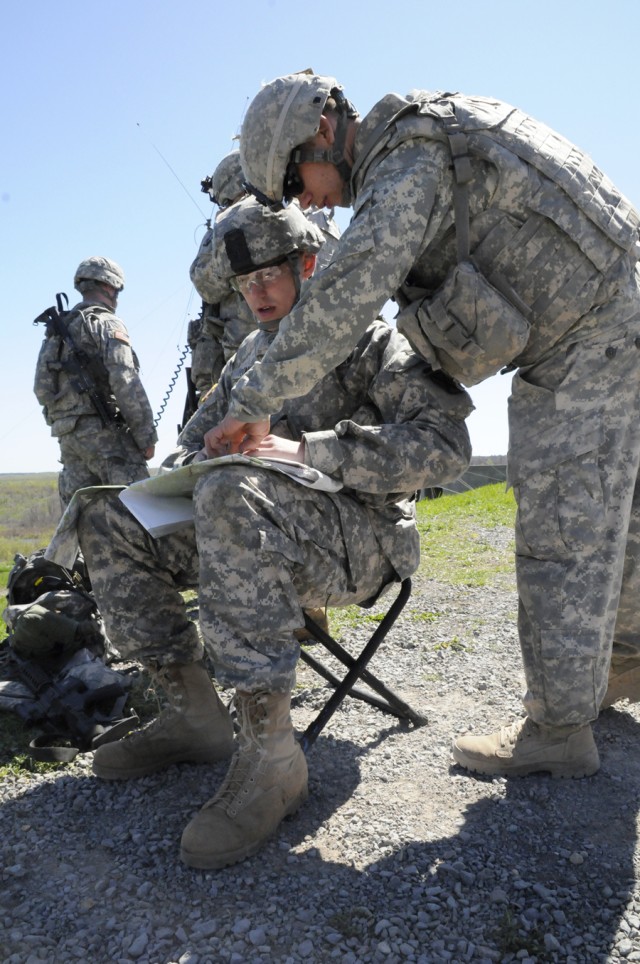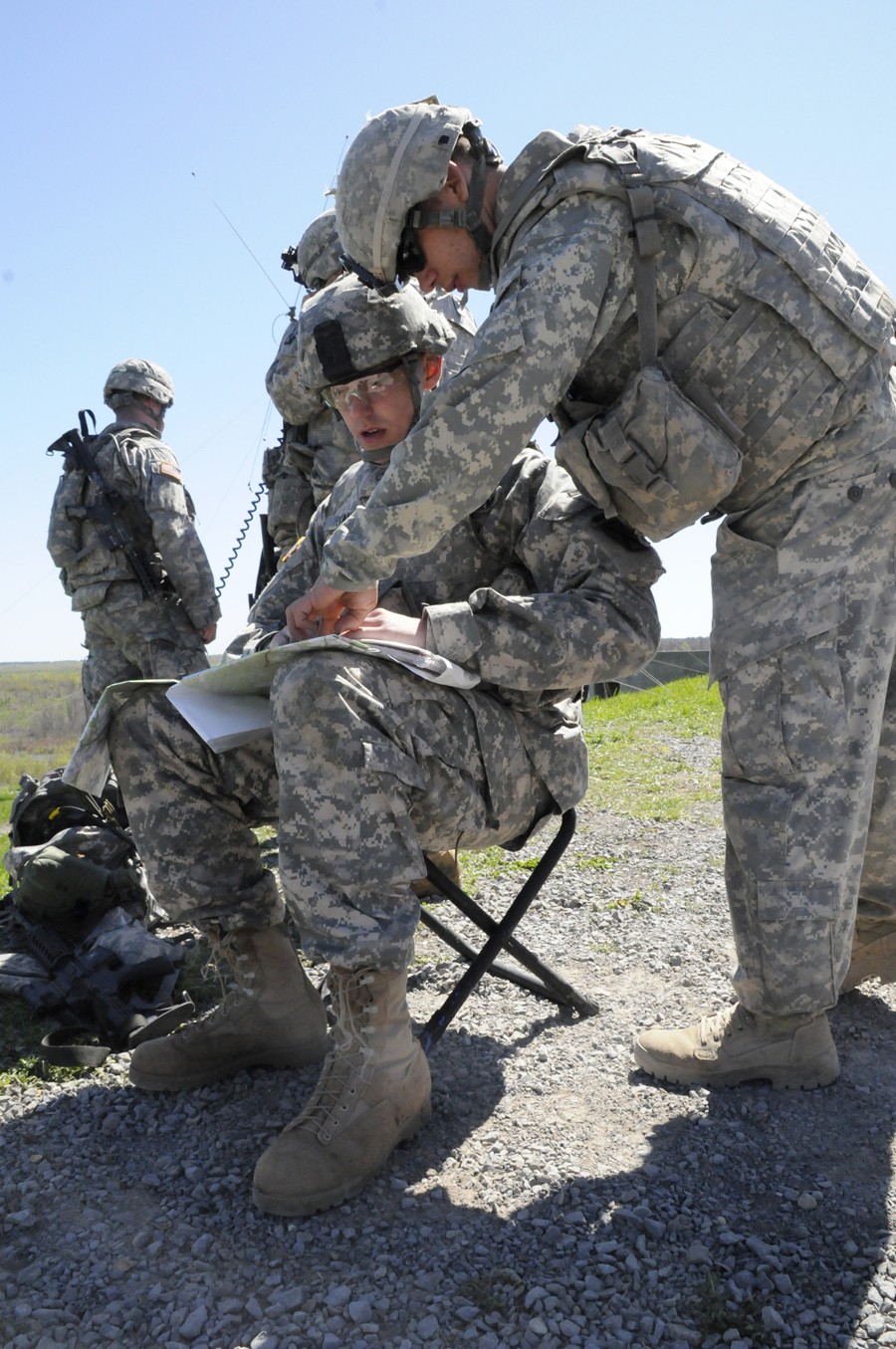FORT DRUM, N.Y. -- It's late morning as Pfc. Jarad Evans, forward observer, reconfigures safety box coordinates on a map, while his teammate, Pvt. Troy Gromley, radio telephone operator, uses a radio to contact a unit about five miles south of their station.
Two minutes later, a puff of smoke appears, and seconds later, a loud "boom" is heard about a mile north of the hill that the Soldiers are sitting on. The Soldiers then adjust the impacted round to ensure all subsequent rounds fired are on target.
Evans and Gromley, both with 2nd Battalion, 14th Infantry Regiment, 10th Mountain Division (LI), make up a forward observer team. Their job is to direct where the artillery rounds will go by giving coordinates to artillery Soldiers who fire the rounds.
In addition, these Soldiers also communicate battlefield intelligence such as enemy locations, strength and activities to infantrymen on the ground.
Soldiers from 2nd Brigade Combat Team participated in a field artillery exercise May 10-13 on Fort Drum's Outpost 4.
For two days, fire support teams - which are composed of three forward observer teams - provided coordinates to Soldiers on Training Area 8 B who were qualifying to be able to fire three types of rounds: high explosives, smoke rounds and illumination rounds. High explosives are used to destroy the enemy, smoke rounds are used to provide cover for Soldiers, and illumination rounds are used to see at night.
Although Soldiers from 2-14 Infantry were assisting troops from 2nd Battalion, 15th Field Artillery Regiment with qualifying on directing artillery rounds, Pfc. Michael Vanderberg, radio telephone operator with 2-14, said the training is also beneficial to him because the exercise is "all about repetition and getting used to talking on the radio."
Sgt. Donald Mitchell, forward observer with 2-14, described the fire support teams as the "eyes and ears of field artillery."
"We observe where rounds impact, which is the 'meat and potatoes' of our jobs," he added.
"Fire support teams not only call for fire, but they are critical in order to paint the picture of the battlefield for the ground maneuver commander. Commanders can not effectively maneuver their troops without knowing where the enemy is or the obstacles in their way," explained Sgt. 1st Class Steven Harman, 2-14 Infantry fire support sergeant.
"Timely and accuracy are the two watch words we use when doing this training," Mitchell noted.
Soldiers on OP4 took a break from determining coordinates for their counterparts Thursday, and during their downtime they completed some team-level training and fire support tasks.
The fire support teams stood up again on Friday to finish the exercise, which was a raid in conjunction with live-fire training.
Harman said artillery Soldiers play an important role in the mission since they are able to weaken the enemies, allowing the infantrymen to be more effective.
Mitchell noted that like most field exercises, this training is "low stress compared to how we would actually do it in combat."




Social Sharing